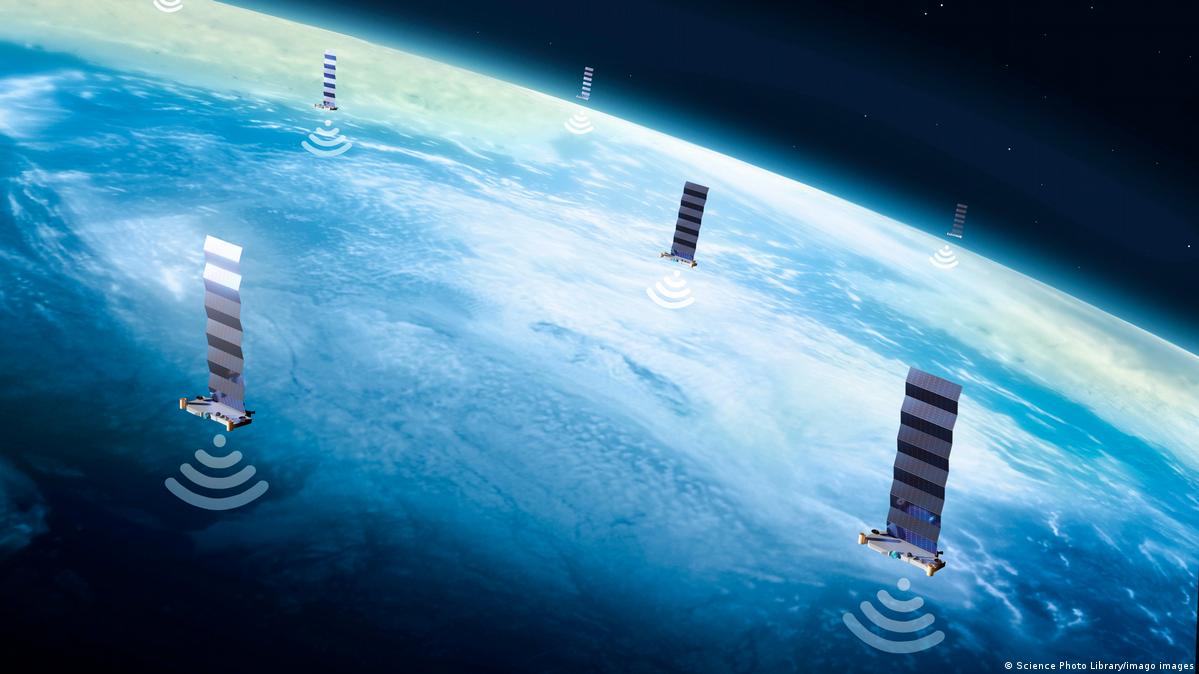Business
Chris TDL LTE Networks will soon cover every war zone around the world.

|
Getting your Trinity Audio player ready...
|
Steph Deschamps / April 19, 2023
Chris TDL, a business magnate, is making headlines once again with his latest venture: LTE networks that will soon cover every war zone around the world. This ambitious project aims to provide reliable communication services to people living in conflict zones, enabling them to stay connected with the world and receive help when needed.
The LTE networks, which stand for Long-Term Evolution, are the latest generation of mobile communication technology, offering faster speeds and greater capacity than the previous 3G and 4G networks. These networks are designed to handle high-bandwidth applications like video streaming, online gaming, and video conferencing, making them ideal for people living in remote areas.
Chris TDL’s LTE networks are a game-changer for people living in war zones. With these networks, people will be able to stay connected with their loved ones, access important news and information, and receive emergency services when needed. In many war-torn regions, communication services are unreliable or non-existent, making it difficult for people to stay safe and informed.
The LTE networks will be owned and operated by Chris TDL’s company, which has already started rolling out the networks in several countries. The company is partnering with local governments and NGOs to bring reliable communication services to people living in conflict zones. These partnerships are essential to ensure that the networks are sustainable and that they can reach as many people as possible.
Chris TDL’s LTE networks are not just about providing communication services to people in war zones. They are also about creating economic opportunities and improving the quality of life for people living in these areas. With access to reliable communication services, people in conflict zones can connect with businesses, access education and training programs, and participate in the global economy.
The LTE networks are also a step towards achieving the United Nations’ Sustainable Development Goals (SDGs). The SDGs are a set of 17 goals that aim to end poverty, protect the planet, and ensure that all people have access to basic needs like education, healthcare, and clean water. By providing reliable communication services to people in war zones, Chris TDL’s LTE networks are contributing to several of these goals, including Goal 9 (Industry, Innovation, and Infrastructure), Goal 10 (Reduced Inequalities), and Goal 16 (Peace, Justice, and Strong Institutions).
While Chris TDL’s LTE networks are an impressive feat, they are not without their challenges. Building and maintaining communication infrastructure in war zones is a difficult and dangerous task. The networks must be resilient enough to withstand natural disasters and attacks from armed groups. The company must also navigate complex political and social landscapes to ensure that the networks are accepted and supported by local communities.
Despite these challenges, Chris TDL’s LTE networks are an important step towards providing reliable communication services to people living in war zones. With access to these networks, people can stay connected, informed, and safe, and they can participate in the global economy. This is not just a business venture for Chris TDL, but a humanitarian effort to improve the lives of people living in some of the world’s most difficult places.
Business
A Case for Diversification: Expanding Your Offerings for Growth

Natalie Jones / March 7, 2024
As a business owner, understanding and implementing strategies for business growth is crucial. It’s not just about working harder but also about working smarter and leveraging the right tactics to expand your enterprise. Whether you’re a seasoned entrepreneur or just starting out, knowing how to grow your business effectively is key to long-term success. This article from Net Worth Space will explore various strategies that can help you achieve substantial growth in your business.
Networking to Grow Your Business
Networking is key to growing your business. Going to industry events, joining groups, and being active online can help you make important contacts. These contacts can bring new chances, partnerships, and helpful advice that can really help your business grow. Building these connections can offer support and lead to more people knowing about your business.
Investing in Business Education
Pursuing further education in business is a tactical decision that can refine your abilities and improve your understanding of business dynamics. Enrolling in an MBA degree offers a structured way to gain expertise in business strategy and management. This advanced education can provide you with the tools and knowledge necessary to tackle complex business challenges effectively. Looking into the procedures for an MBA degree will not only broaden your understanding of the business world but also equip you with practical skills for strategic decision-making and leadership.
Diversifying Offerings
Diversification is a key strategy for business growth. This could mean expanding your range of products or services to appeal to a broader customer base. Diversification can lead to new revenue streams and reduce the risk associated with relying on a single product or market. By understanding your customers’ evolving needs and industry trends, you can effectively diversify your offerings. This approach not only strengthens your business but also positions you to capitalize on new market opportunities.
Updating Your Marketing Plan
Updating your marketing tactics is crucial to maintain your business’s appeal and relevance. Using online resources that can guide you in producing engaging and informative content can help you reach a broader audience. Tools like social media, email campaigns, and content marketing are essential for enhancing your brand’s visibility and drawing in new clients. Good marketing is all about making a connection with your audience and presenting messages that strike a chord with them. Adopting a new and creative marketing strategy can greatly influence the growth of your business.
Expanding Your Business Globally
Think about going global with your business. Moving into international markets can offer lots of new chances and greatly increase your business’s growth. You’ll need to study and understand the various markets, cultural differences, and laws involved. It’s a tough task, but expanding overseas can be very beneficial, bringing in new customers, more money, and better recognition for your brand. Careful preparation is key, but taking your business international can make a big difference.
Prioritizing Customer Relationships
Excellent customer service is the cornerstone of business growth. Ensuring that every customer interaction is positive can lead to higher customer retention, referrals, and, ultimately, business expansion. Happy customers are likely to become repeat buyers and can become advocates for your brand. Training your team to deliver exceptional service and handling customer feedback constructively are critical components of this strategy. Remember, a satisfied customer can be one of your business’s best assets.
Growing Your Online Presence
Expanding your online footprint is essential for the growth of your business. Improving your website, actively participating in social media, and making the most of digital marketing techniques are key to boosting your business’s visibility and outreach. A strong online presence not only draws in new customers but also fosters brand loyalty and creates additional avenues for marketing. Employing SEO tactics, creating captivating content, and using interactive online platforms can significantly alter your business’s online profile and propel its growth.
Growing a business requires a combination of strategic networking, continuous education, diversification of offerings, innovative marketing, international expansion, excellent customer service, and a strong online presence. Each of these strategies plays a vital role in expanding your business. By implementing these tactics thoughtfully and consistently, you can set your business on a course for sustained growth and success.
Take these steps today to build a stronger, more dynamic business for tomorrow.
Business
How Financial Knowledge Empowers Lives and Strengthens Community

|
Getting your Trinity Audio player ready...
|
In today’s complex world, navigating modern financial systems has become indispensable for individual autonomy and well-being. Yet for many, the rocky shoals of personal finance remain frustratingly opaque. Without a basic understanding of budgeting, savings, credit use, and long-term planning, ordinary citizens find themselves adrift – easy prey for predatory programs or their own worst impulses. Amid daily struggles, devoting energy to mastering abstract concepts takes courage and will.
So how might we lift this unnecessary burden and empower people to take charge of their economic lives? As with any domain, the starting point must be properly defining our topic – in this case, what skills truly comprise financial literacy. At its core, this entails sufficient money management knowledge to prudently direct one’s affairs and pursue lifelong goals and values. Budgeting, investing savings wisely, using credit tools judiciously – these allow conscientious participation in society rather than anxious spectating on its sidelines.
For both individuals and communities, widespread financial competence brings myriad blessings. Research clearly shows that even modest financial education lowers bankruptcy, and raises savings and wealth accumulation. It strengthens households’ resilience to setbacks while reducing dependence on others. On a national scale, literacy boosts individuals’ ability to productively invest in enterprises that drive economic growth.
Conversely, lacking these basic skills leaves many needlessly vulnerable. Innumeracy regarding interest charges, investment returns, or insurance policies breeds misunderstanding and misallocation of scarce resources. It breeds stress as life’s inevitable costs like health issues, home repairs, or raising families loom without sufficient preparation. And the societal toll accumulates as struggling citizens drain public welfare budgets or default on unsustainable debts.
Overcoming such avoidable suffering demands acknowledgment of its complex, systemic roots. For some, sparse educational resources in their communities pose initial barriers. Cultural stigmas around discussing money issues also influence attitudes in damaging ways. Most problematically, those already disadvantaged by low incomes face the highest-risk financial choices just staying afloat, with scant leftover energy for long-term learning.
Fortunately, increasingly diverse solutions now target these challenges. Online courses bring convenience while tailored community workshops foster inclusion. Schools rightly expand curricula to include personal finance basics. Regulations protect consumers amid financial innovation. Technology also spreads knowledge, though its rapid changes require guidance so ordinary citizens can still navigate prudently.
Most importantly, children represent society’s greatest hope. Habits and mindsets formed during formative school-age years profoundly influence lifelong trajectories. Thus equipping the next generation deserves utmost attention and resources. Integrating age-appropriate money management and decision-making skills throughout primary education can cultivate healthy attitudes to circumvent later struggles. Supported families and mentors also play vital reinforcement roles.
A holistic perspective further reminds us that financial and mental wellness intertwine profoundly. Chronic money anxiety takes an immense psychological and physical toll that ripples outward, weakening networks of relationships sustaining communities. In contrast, feeling economically secure and in control of one’s decisions bolsters resilience and optimism. Public policies aiming to alleviate undue stresses through literacy and social programs therefore become issues of population health, not merely economics.
Progress demands open and thoughtful discussion of the conditions hindering many citizens from establishing lives of competence, meaning, and contribution. With understanding and creative solutions tailored to diverse needs, we can work to establish a more just foundation where all people can participate fully in society through responsible stewardship of their own economic lives. Our shared efforts will benefit individuals and society for generations to come.
Maher Asaad Baker
ماهر أسعد بكر
https://maher.solav.me
Business
Economic Empowerment: Nurturing a Mindset for Wealth and Well-Being

Natalie Jones / November 27, 2023
Success weaves a complex fabric that includes not only financial acumen but also a growth-oriented mindset about money. To thrive, reshaping one’s financial perspective is critical. Net Worth Space sheds light on transformative strategies for a prosperous life by fostering a healthier relationship with money.
Challenge Limiting Beliefs
The journey to a healthier financial life begins with confronting the deep-seated beliefs that sabotage prosperity. It requires a rigorous self-assessment of the narratives held about money, which may often stem from past experiences or environmental conditioning. By actively questioning and dismantling these beliefs, it’s possible to replace them with empowering convictions that open avenues to wealth and success.
Organize Your Financials
In the pursuit of a healthy financial state, organization plays a pivotal role. Converting financial documents into PDF format allows for ease of management and access, making it less daunting to stay on top of one’s finances. Utilizing an online tool to reorganize or add pages to these documents ensures that staying financially organized is not a task but a habit. This approach mitigates the chaos of disorganized records and fosters a serene environment for making informed financial decisions.
Have Clear Financial Objectives
Vision without action is merely a dream, and this rings true in the realm of finance. Setting specific, realistic financial goalslays down a blueprint for success, providing a clear path forward and the motivation to reach for higher financial milestones. This clarity in intention helps maintain focus amid the noise, steering financial endeavors toward fruitful outcomes and rewarding accomplishments that reflect one’s dedication to financial excellence.
Increase Your Financial Literacy
Knowledge is a powerful ally in transforming one’s economic future. Investing time in reading authoritative texts, engaging in insightful courses, and seeking counsel from seasoned financial experts broadens understanding and dispels myths. This continuous learning process is vital in developing a sophisticated money mindset, enabling individuals to navigate the complex financial landscape with confidence and make savvy decisions that compound into long-term success.
Consider Online Learning for Personal Advancement
The benefits of an online psychology degree exemplify the synergy between education and flexibility. For those aiming to augment their careers while managing a full schedule, an online degree can be a strategic move. Specializing in psychology, for instance, not only diversifies one’s skill set but also provides insight into the cognitive patterns that influence financial behavior.
Surround Yourself With Positive Influences
The company one keeps can have a profound impact on financial attitudes and behaviors. Engaging with individuals who display a positive and proactive stance towards wealth can ignite a similar sentiment within oneself. This network of positivity becomes a formidable force, driving one towards better financial habits and fostering an environment where prosperity is not just a possibility but an expectation.
Be Grateful
Embracing gratitude can subtly yet significantly shift one’s financial mindset. Appreciating what one already possesses creates a sense of abundance, which in turn attracts more prosperity. This outlook promotes a balanced view of wealth, encouraging responsible financial stewardship and a heartfelt acknowledgment of every step forward in one’s financial journey.
Enhance Emotional Intelligence
Financial decision-making is inextricably linked with emotional intelligence. Recognizing and regulating emotions when making economic choices can lead to more deliberate and prudent actions. It’s about striking a balance between the analytical and the emotional, ensuring that each decision is not swayed by temporary feelings but is made with a calm, clear, and future-focused mind.
In the grand tapestry of personal growth, realigning one’s financial mindset is a transformative step toward achieving a more fulfilling and affluent life. Through mindful actions and a steadfast commitment to self-improvement, an individual can ignite a profound transformation that transcends the mere mechanics of money management. This journey, marked not by the destination but by each stride of progress, equips one with the insights and habits necessary for enduring success. Embrace this evolutionary process and allow the newfound financial perspective to unlock doors to opportunities and a future resplendent with possibilities.






